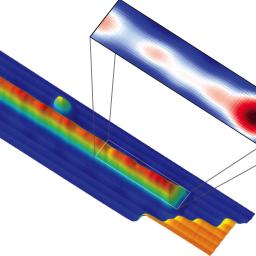New Particle Is Both Matter and Antimatter
 Since the 1930s scientists have been searching for particles that are simultaneously matter and antimatter. Now physicists have found strong evidence for one such entity inside a superconducting material. The discovery could represent the first so-called "Majorana particle," and may help researchers encode information for quantum computers.
Since the 1930s scientists have been searching for particles that are simultaneously matter and antimatter. Now physicists have found strong evidence for one such entity inside a superconducting material. The discovery could represent the first so-called "Majorana particle," and may help researchers encode information for quantum computers.As opposed to particles found in a vacuum, unattached to other matter, these Majoranas are what's called "emergent particles." They emerge from the collective properties of the surrounding matter and could not exist outside the superconductor. The discovery could have implications for searches for free Majorana particles outside of superconducting materials. Many physicists suspect neutrinos-very lightweight particles with the strange ability to alter their identities, or flavors-are Majorana particles, and experiments are ongoing to investigate whether this is the case. Now that we know Majorana particles can exist inside superconductors, it might not be surprising to find them in nature.